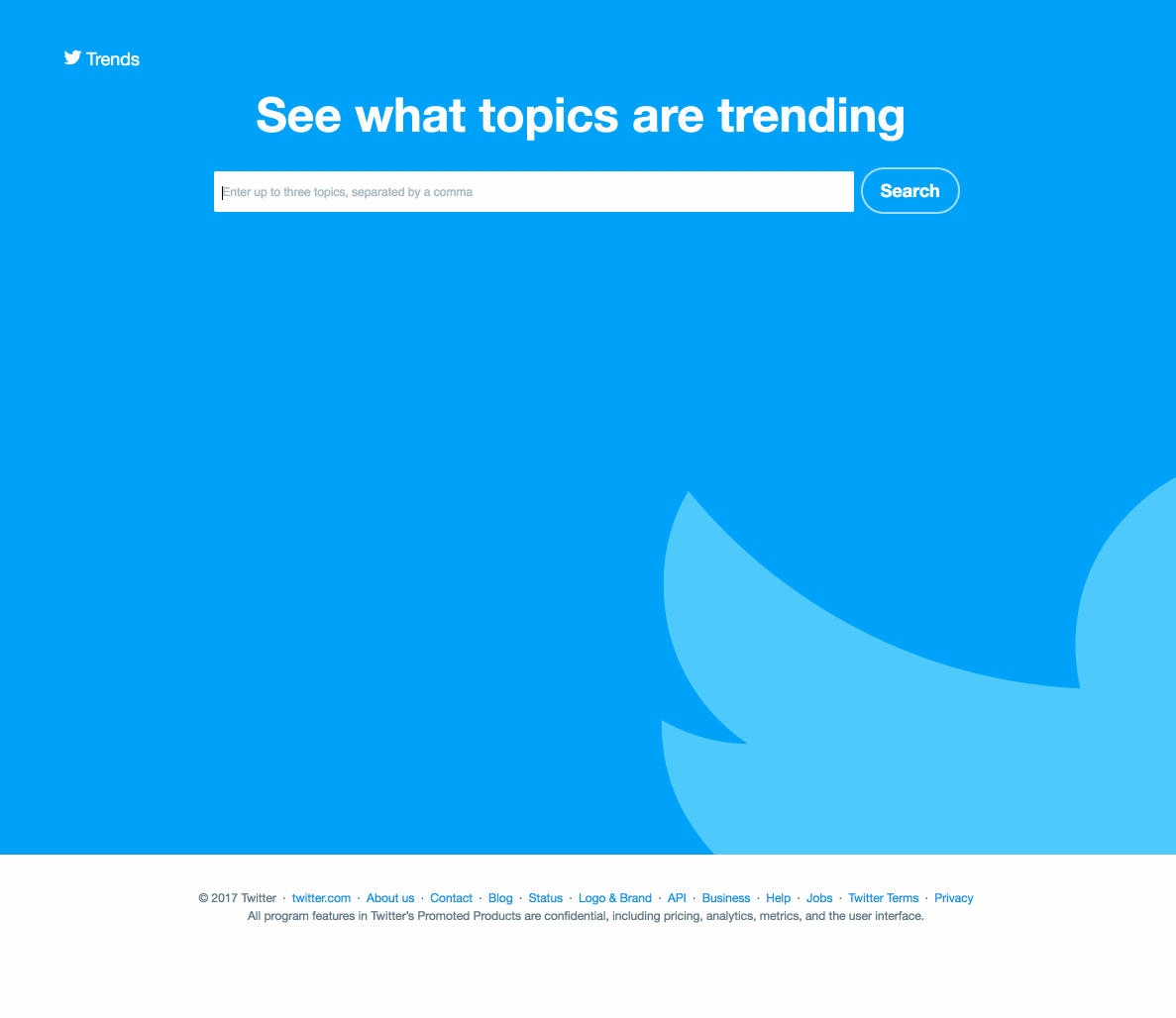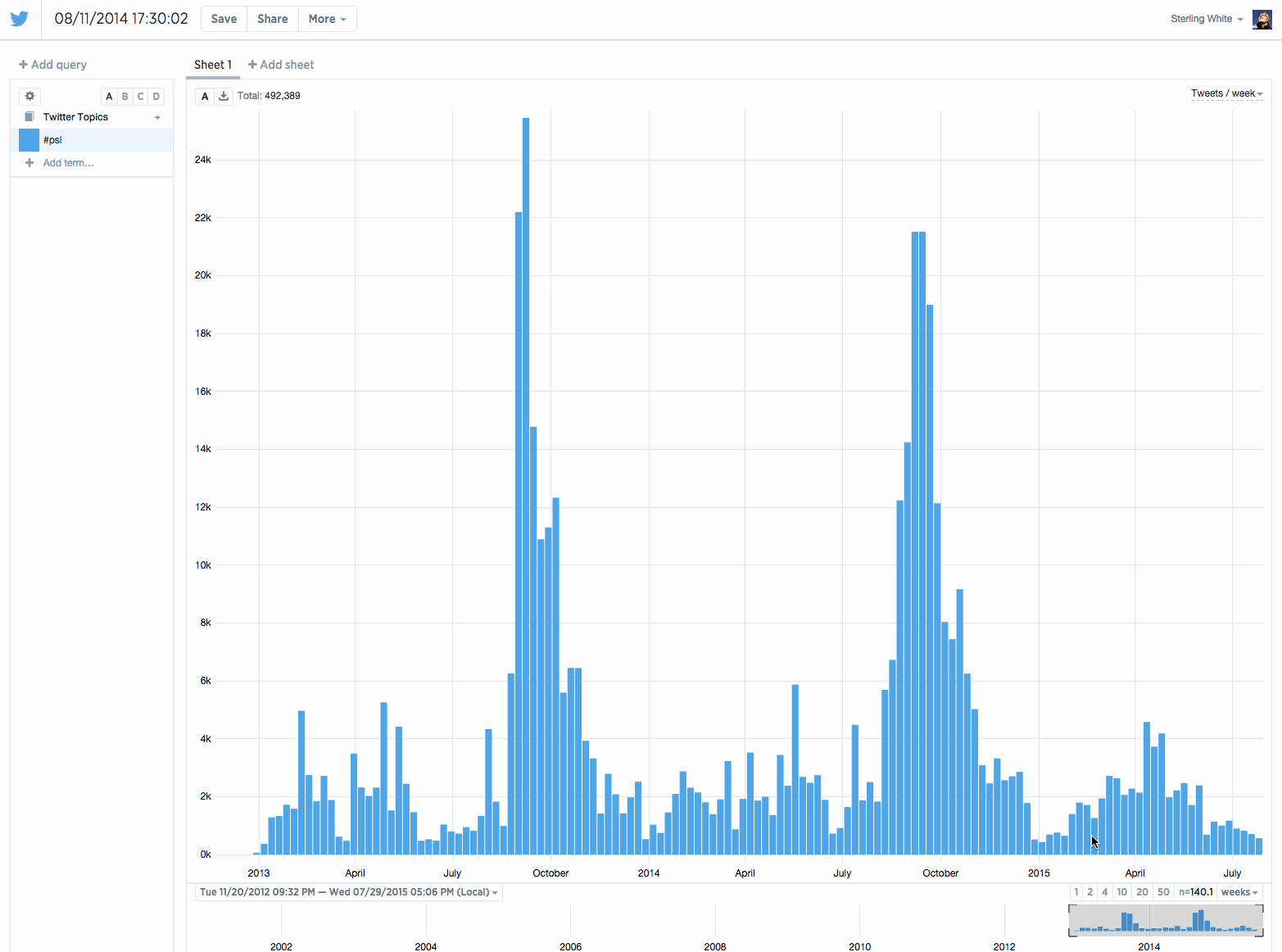Twitter Trends
Measuring human consciousness with an always-expanding global library of public conversation
In progress | Role: Design lead
Our internal-facing tool that Trends is built on top of
Twitter Trends is the public version of a tool we designed and built for internal sales customers three years ago. By accessing the tool, we give customers the ability to measure Tweets over time by searching for topics, conversations, hashtags, and @handles.
THE CUSTOMER
We developed nine personas ranging from advertisers to agencies to news editors to government associates. For each of these personas, we found realistic public identities to use that would help reinforce we're talking about real people with real jobs and real motivations. For each of these personas we determined one key question that person might seek to answer in doing their job better with the tool.
THE CHALLENGE
The world talks about Twitter as an always-on conversation machine; a Library of Alexandria that updates and refreshes every second. For most people though, it's difficult to measure the shape and impact of any conversation. How much did people talk about Donald Trump compared to Hillary Clinton? Are the Cubs or Indians more popular on Twitter? Which One Direction member was most popular at the VMAs last night?
Harry. To Zayn's constant consternation; the answer is always Harry.
Businesses do have access to third party social listening tools, that use Twitter data either through sampling Tweets with the public REST API, or through paid services that ingest the firehose. We believed Twitter should serve the public with access to Tweet counts both as a public service and as a trust development mechanism to help generate new advertiser leads.
PROCESS: SKETCHES
PROCESS: WHITEBOARDING
PROCESS: THE MESSY IN-BETWEEN
THE SOLUTION
Tools that benefit many types of customers are tough to get built. We started by defining nine customer types, divided in to three archetypes: the Historian, the Pragmatist, and the Futurist. These roles were based on whether the primary user concern was based on understanding the past, knowing the present, or predicting the future. To leverage internal resourcing, we focused on advertiser customer scenarios.
A tool like Trends can get very complex very quickly (Boolean operators anyone?). We decided to err on the side of simplicity and limit to three queries and default to a one week period. Once we return a big bucket of Tweets, there's all sorts of things we can return like demographic, biggest influencers, sentiment analysis and so forth. We decided to leave a lot of that out and would wait to hear from customers to prioritize some of the more complex features while deciding on showing top Tweets, related terms, and top media.
SELECT PRODUCT VIEWS
(Authentic values redacted and or changed to protect company privacy)
RESULTS
The internal tool has provided our sales teams with revenue benefits that would be impossible to quantify. It’s a tool that every account manager and member of the sales team uses on a regular, if not daily basis. The public version of the tool is still in a limited release as we get feedback an decide on next features to prioritize.



















